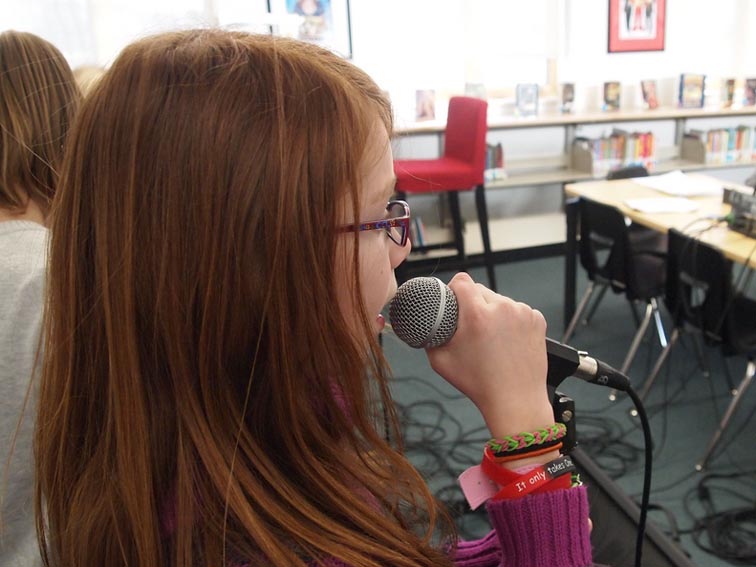As technology becomes more commonplace in classrooms, teachers from preschool to higher education are finding innovative ways to use technology to provide feedback to their students.
Some educators rely on popular tablet computers to communicate with their students both inside and outside the classroom, while others use propriety software, social media and email to provide regular feedback, insight and instruction. Whatever the method, teachers across the country have latched onto technology as a means to remain better connected with students after classroom and office hours, or to more closely monitor students’ progress inside the classroom.
Popular Technology In The Classroom
Bridget Draxler, professor at Monmouth College in Monmouth, Ill., uses both social media and online communication in the classroom. Draxler, an English and communications professor and director of the college’s Communications Across the Curriculum program, communicates with students via Skype for student interviews on papers, and she posts paper proposals on her Twitter account. She creates YouTube videos to post feedback for students and others in her classes, and she uses Google Drive for group writing projects.
Whereas Draxler has employed a wide range of technology to foster better communication with students, Perry Callas, an instructor at Clatsop Community College in Astoria, Ore., relies on email and blog posts to provide feedback to his students. Callas says written answers to questions often allow him to provide clearer insight than face-to-face interaction.
“When things are written, ambiguity is less likely,” he says.
Callas uses blog posts for discussion of classroom topics and to provide an open forum where ideas are discussed, debated and analyzed so students can see what their peers are thinking on a particular topic.
Other teachers use iPad applications or proprietary cloud-based software to monitor and provide feedback on student progress. Still others, such as Sarah Brown Wessling, an ELA teacher at Johnston High School in Johnston, Iowa, use podcasts. Brown Wessling records individual podcasts for her students to provide personalized feedback and suggested revisions on their papers.
“When I first started teaching, I spent all this time writing on these papers,” Brown Wessling says. “I decided I can change how I do this. It takes the same amount of time, but I can say so much more in 15 minutes than I could ever write.”
How Technology In Education Is Helping Students And Teachers Interact
One way technology is changing education is by providing greater accessibility to instructors. Callas says that teachers are available almost 24 hours a day to interact with students rather than the “old-school” methods of communication such as scheduling office visits or impromptu after-class discussions.
“A student can now send a text, email or social media message via Facebook, Twitter or Tumblr at any time,” Callas says.
Brandon Haas, a teacher at Freedom High School in Tampa, Fla., uses a web-based application called IWitness in his classroom. One of the things Haas says he likes most about the program is its use of social-media style message board for teacher-student communication. The application is similar to social media platforms used by millions of teens, and it also provides a secure, controlled communications forum that can’t be accessed from students or people outside of the classroom setting.
 Are Newer Forms Of Communication Better Than Traditional Methods?
Are Newer Forms Of Communication Better Than Traditional Methods?
The strong bonds developed between inspired educators and impressionable students and fostered through discussion and communication have helped many students set their feet upon a new career path in college or find direction in high school — recall the dramatic image of students honoring their teacher by standing on their desks in”Dead Poets Society.”
These days, using technology to communicate with students has become commonplace, but there are a few things teachers and students should do to ensure good lines of communication are established. Using email, social media, blog posts or podcasts to provide feedback only works when students and teachers respond promptly to messages and queries, notes Callas.
Pros & Cons Of Using Technology To Provide Feedback
Mainstream social media platforms such as Twitter and Facebook may be useful, but they also can be problematic — teachers in a K-12 setting must always strike a delicate balance with communications, Haas says. By using an education-only application such as IWitness, Haas safely interacts with his students through a medium that appeals to their lifestyle in a safe environment that protects his integrity as a teacher.
Callas says the access to quick, clear communications is a great benefit to both sides, but he cautions teachers and students alike not to get too wrapped up in their use of technology.
“When people become addicted to texting, messaging or blogging and forget that the point of it all is to make connections with other humans, then can become isolated, not more connected,” he says.
From lesson planning tools to social learning media to tablet computers, technology is re-shaping the way teachers and students communicate and interact both in and out of the classroom.
Rob Sabo writes about business, education and technology; image attribution flickr users leaflanguages and flickeringbrad
